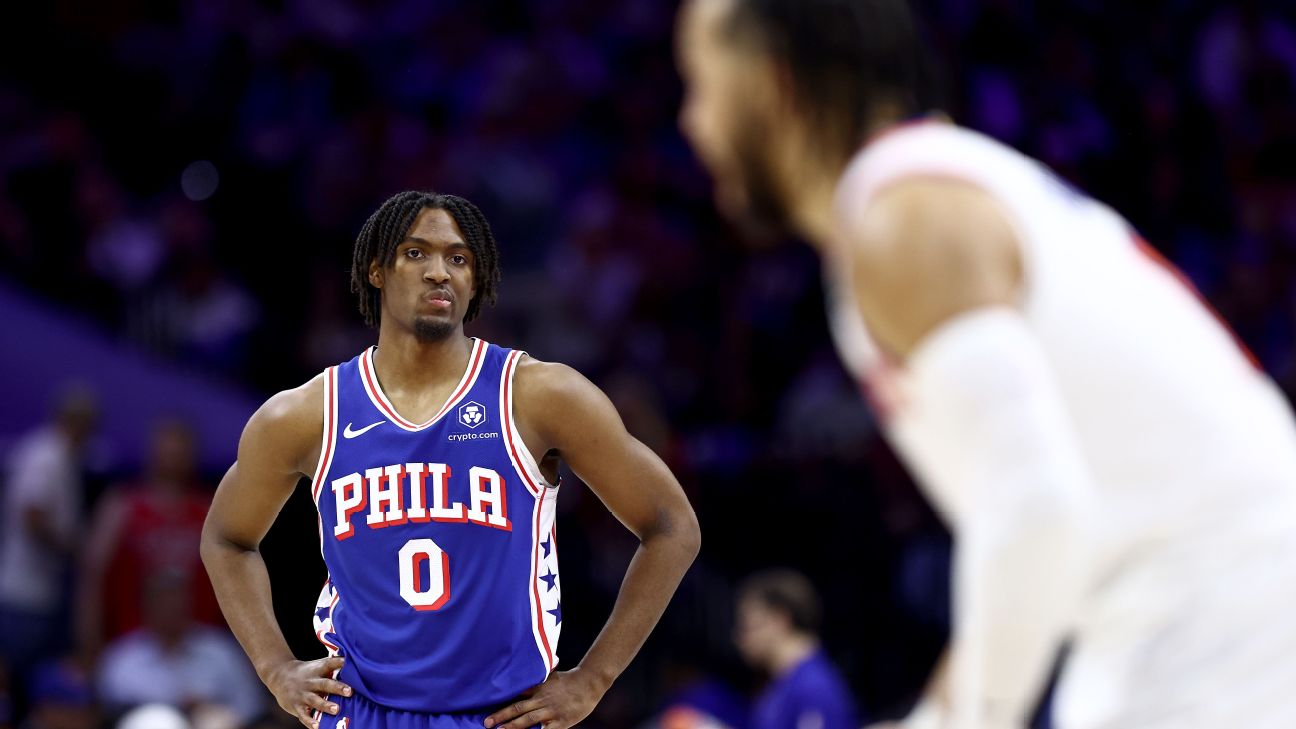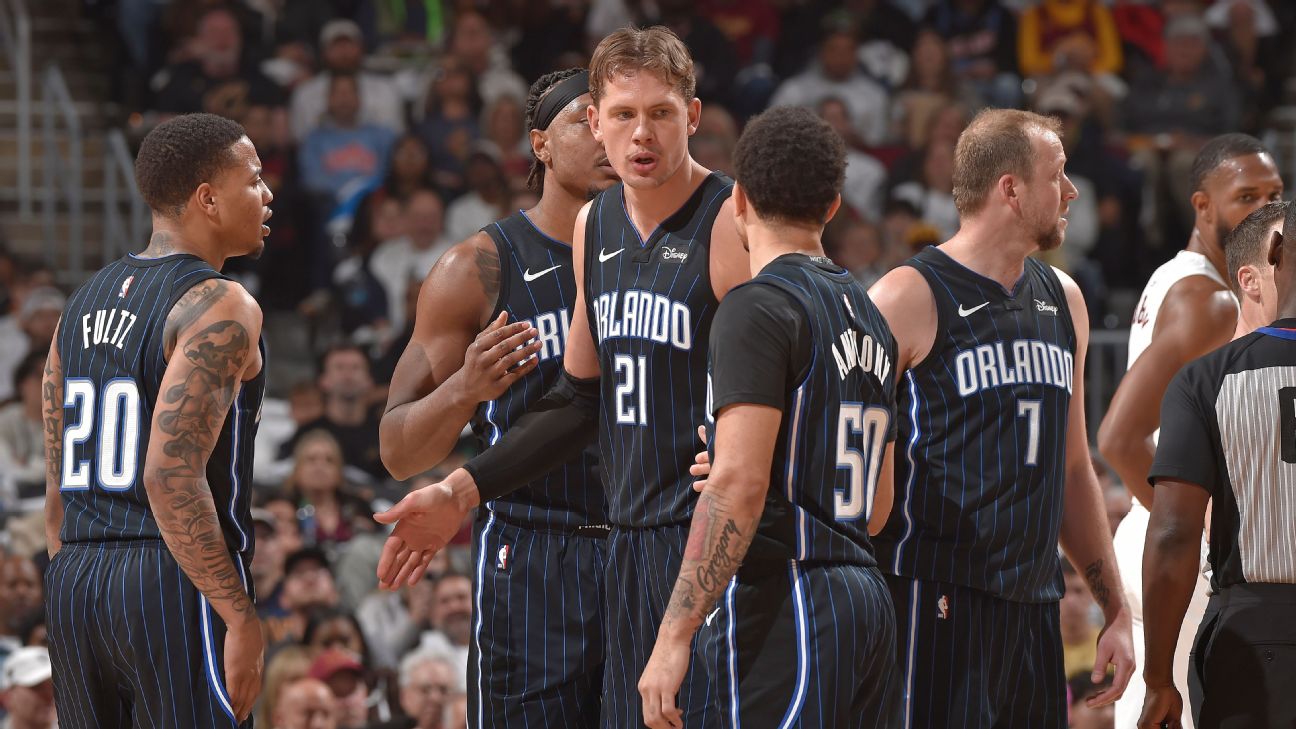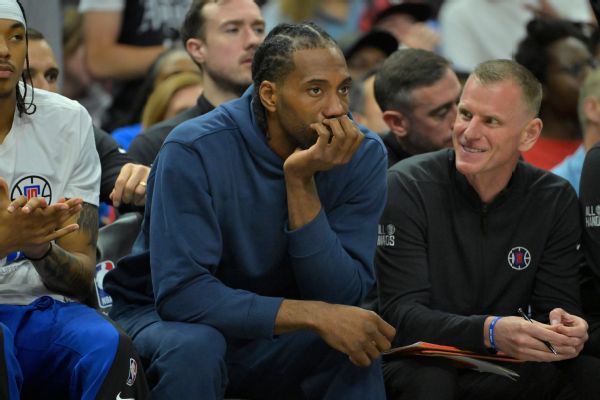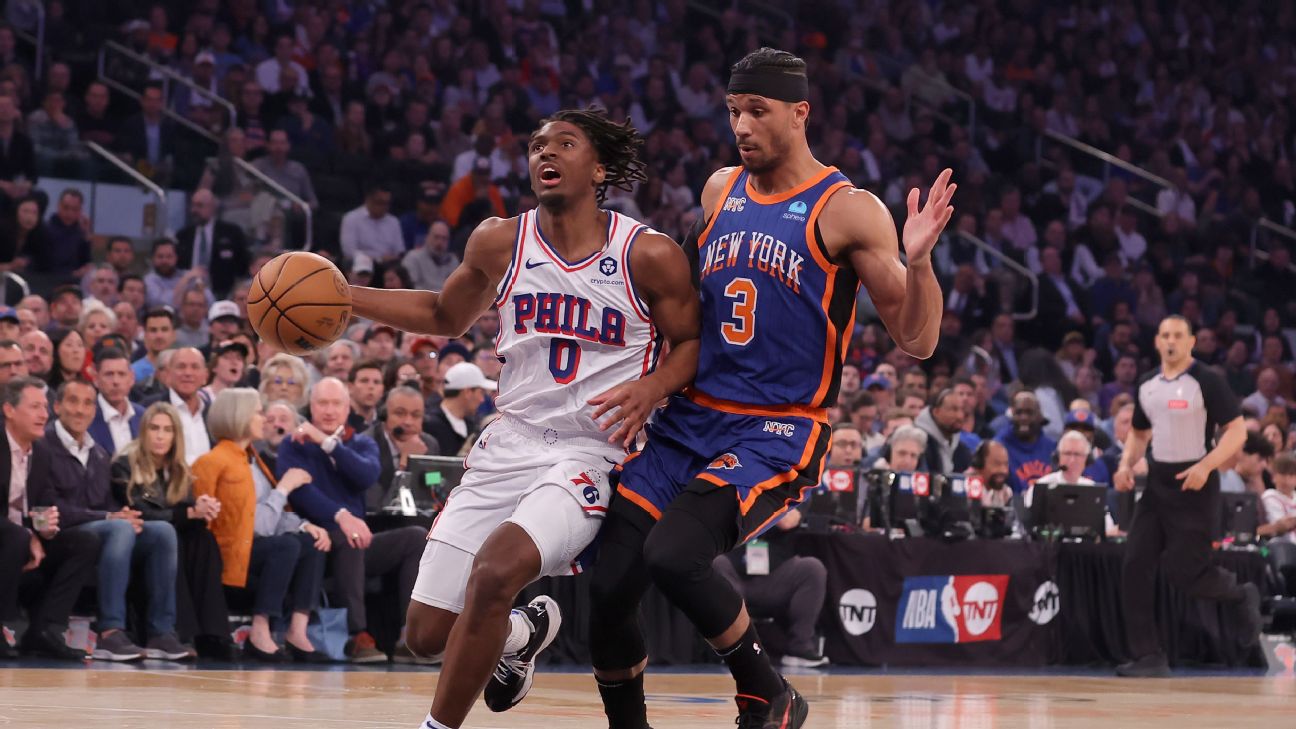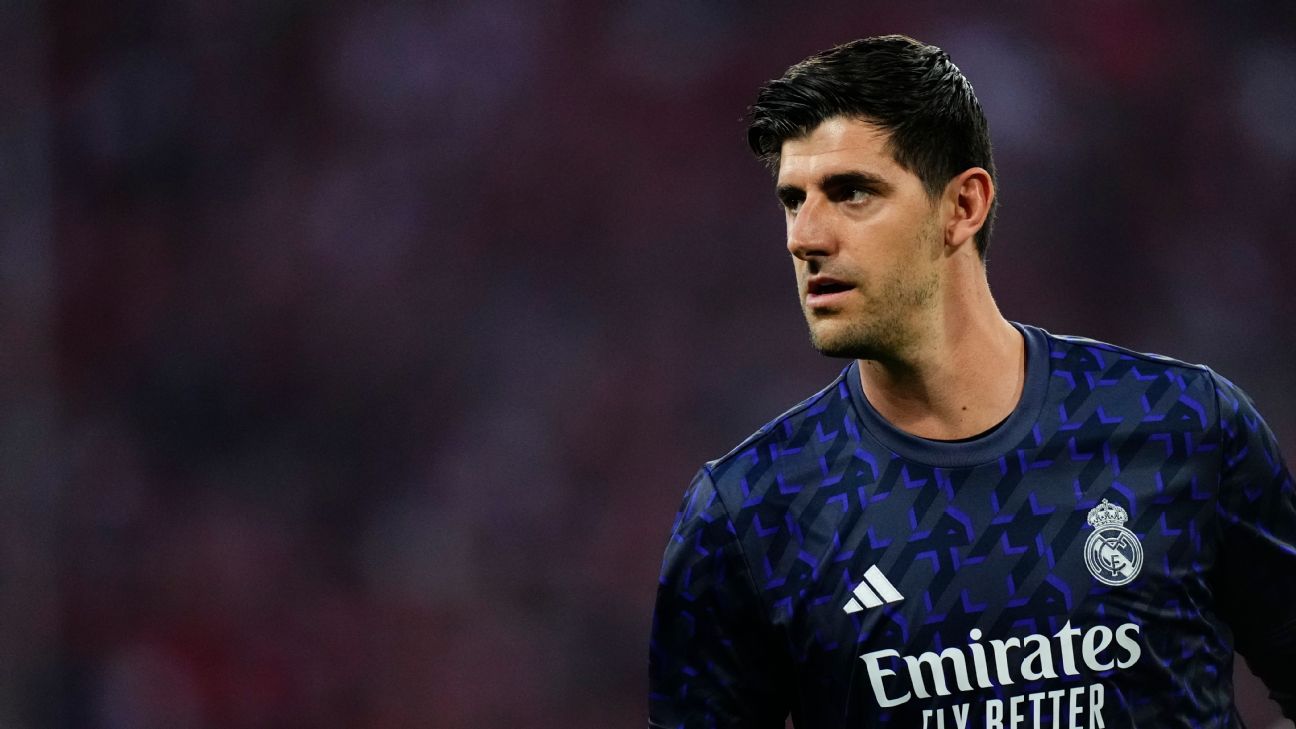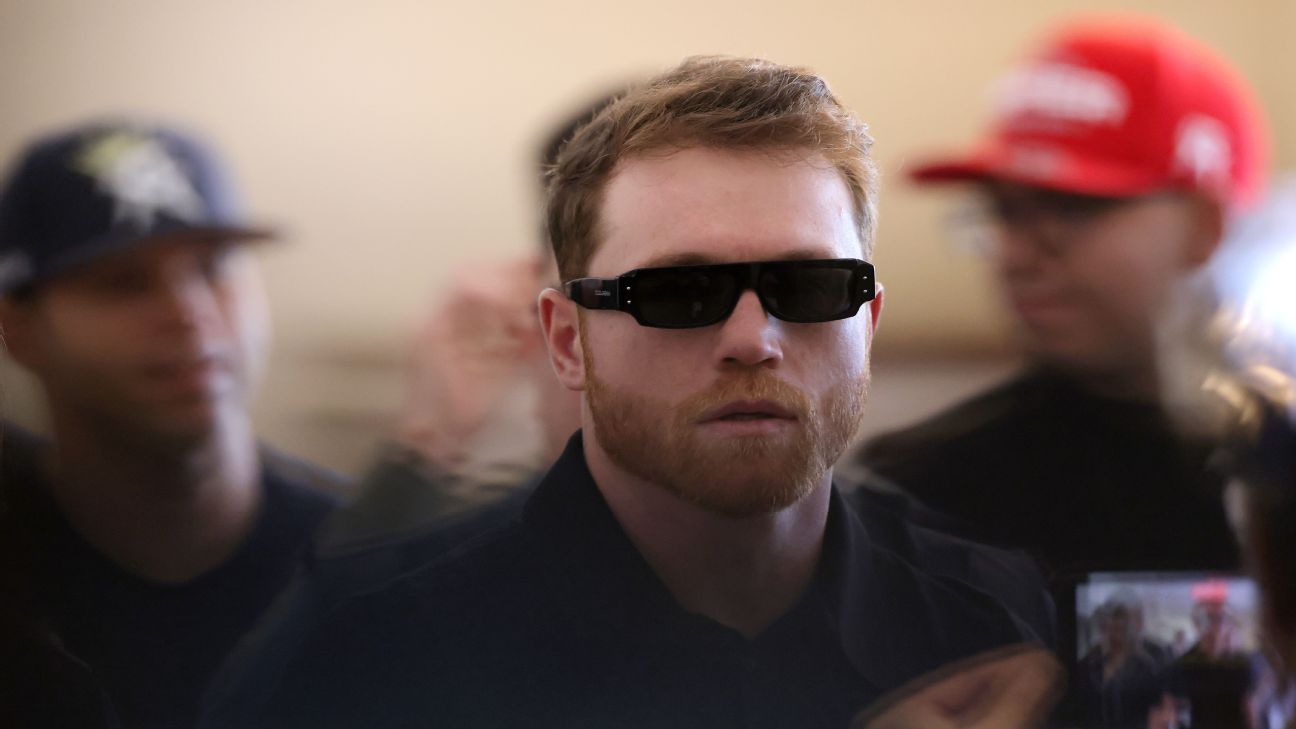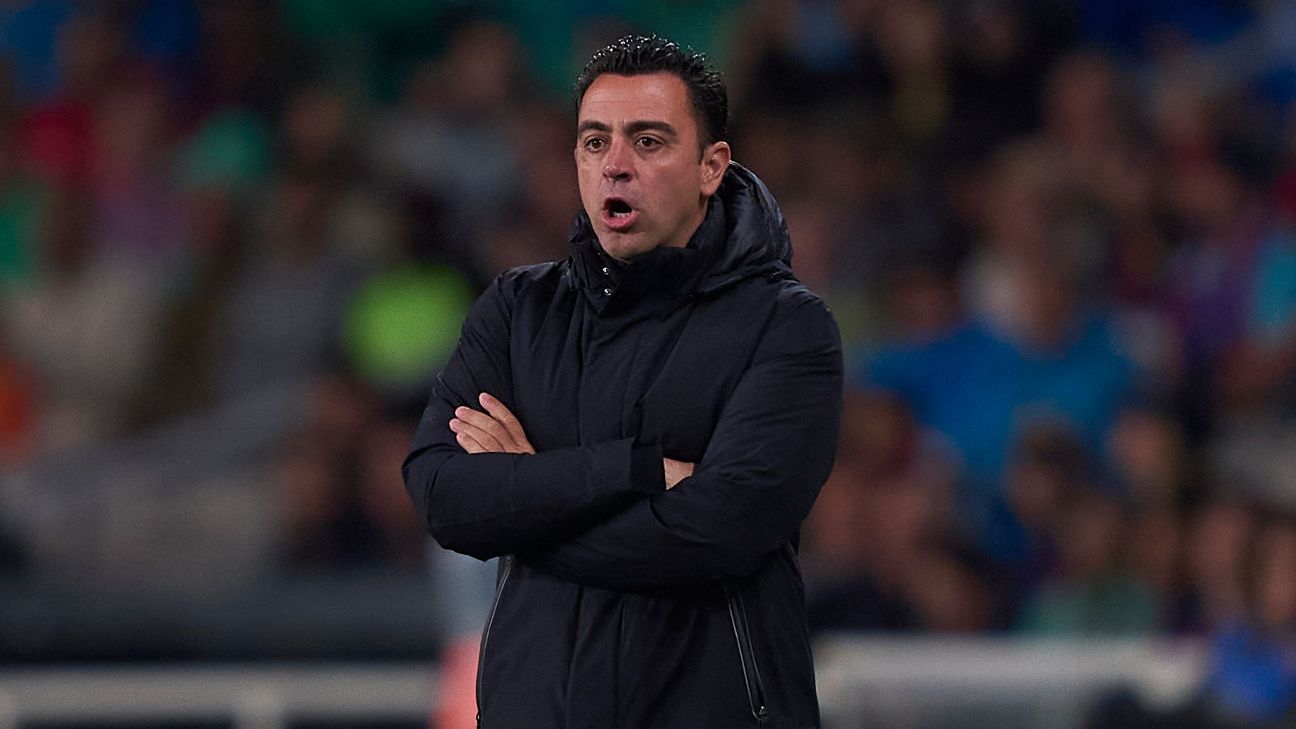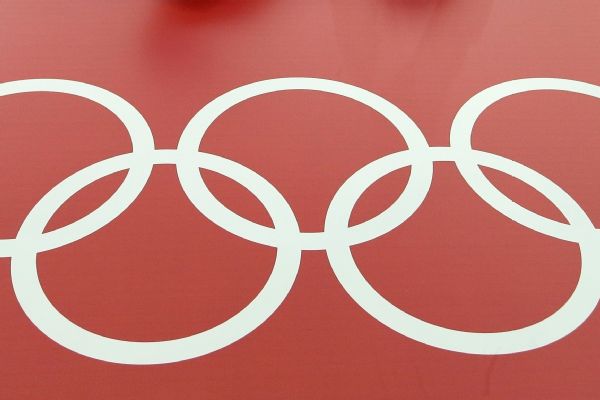![Luka shooting [608x342]](https://a.espncdn.com/photo/2024/0422/r1322984_608x342_16-9.jpg)
Ranking the 50 best players in the college football transfer portal
The LA Clippers had the Western Conference's 11th-best record after the All-Star break at 15-14, trailing not only the other nine teams to make the postseason but also the Houston Rockets. Meanwhile, the Dallas Mavericks went 16-2 over an 18-game stretch after moving Daniel Gafford and Derrick Jones Jr. into the starting lineup on March 7, losing their last two games only after securing the No. 5 seed in the West and resting their starters.
Now these two teams face each other in the first round of the 2024 NBA playoffs. The Clippers opened the series by dominating Sunday's Game 1 against the Mavericks, winning 109-97 in a game in which LA led by 29 points in the third quarter.
Sunday's result was a reminder that what happens in March and April often stays in the regular season rather than carrying over into the playoffs. But what does history tell us about this trend? And what does it mean for the rest of this Clippers-Mavericks series? Let's break down the meaning of peaking -- or fading -- heading into the postseason.
First-half standouts more successful For the most part, history tells us that it's more important to play well in the first half of the season. Over the past 10 playoffs, not counting the bubble in 2020, the team with the better net rating before the All-Star break has gone 109-41 (.727) in all series, as compared to 93-57 (.620) for the team with the better net rating after the break.That happens in part because the All-Star Game doesn't split the NBA season into even halves. Typically, teams play nearly twice as many games before the break, so naturally the first half is likely to translate into home-court advantage. But even when you account for that, higher seeds that do better in the first half have a better series record (100-29, .775) than those that beat their opponents after the All-Star Game (83-28, .748).
Additionally, higher seeds, such as the Clippers, that outplay their opponents before the break and are worse after have gone 25-8 (.758). When that's reversed and the higher seed is worse before the break and better after, they've gone just 8-7 (.533).
There are a couple of reasons post-All-Star play is less meaningful. First, the smaller sample is relevant for randomness as well as earning home court. Second, the end of the regular season can get wonky between teams tanking for lottery positions and those that secure playoff seeds sitting their stars. Previously, I've found that the predictive power of results over 10-game stretches drops throughout the regular season and is at its lowest right before the playoffs.
At the extremes, there might be more meaning. Of the four series in a span in which the lower seed outplayed the higher seed after the All-Star break, three translated into upsets, with the Golden State Warriors beating the Boston Celtics in the 2022 NBA Finals as the lone exception. Because Dallas lost its regular-season finale by 49 points to the Oklahoma City Thunder while starters watched from the sidelines, Clippers-Mavs isn't an outlier. Instead, a different first-round series qualifies: the Orlando Magic (17-10 with a plus-4.7 net rating after the break) against the Cleveland Cavaliers (12-17, minus-3.6). The Cavaliers' second-half swoon hasn't stopped them from taking a 2-0 lead in the series at home.
What about deadline deals?Part of what made Dallas' post-All-Star surge so compelling is there was a causal explanation for its success with two players added at the deadline in key roles. Despite Gafford playing just 14 minutes in Game 1, partially due to foul trouble, the Mavericks had two of the seven players acquired after Feb. 1 see the most action in Game 1 this weekend.
Additionally, Kyrie Irving played in all but Dallas' last two regular-season games after missing 22 before the break. As a result, the Mavericks had the least carryover (as measured by correlation between percentage of minutes before and after the All-Star break) of any team that reached the playoffs. The Atlanta Hawks, eliminated in the play-in, were slightly lower. The other six teams with less carryover focused on player development down the stretch.
Looking at teams similar to Dallas -- improved their net rating by at least two points per 100 possessions after the All-Star break, had a positive net rating before the break and had the lowest minutes correlation before and after -- we get the following list going back to the year 2000.
For the most part, this isn't an encouraging group. Four of the Mavericks' six predecessors, including their own 2009-10 team that added starters Caron Butler and Brendan Haywood at the deadline, ended up losing in the opening round. (Dallas was upset that year with home-court advantage over the San Antonio Spurs.)
Only the 2017-18 Cavaliers, who retooled around LeBron James and Kevin Love ahead of the last of four consecutive Finals appearances, translated their post-break improvement into more than one series win.
Mavs are still in the seriesThe 2010 Mavericks are also a reminder that a Game 1 home win doesn't end a series. San Antonio went on to win four of the next five games. Although post-All-Star performance isn't predictive, there are still plenty of reasons to believe Dallas can come back to win this series.
That starts with the Mavericks' Game 1 shot quality. According to Second Spectrum's quantified shot probability (qSP) metric, which factors the location, type of shot, distance to nearby defenders and the ability of the shooter, Dallas was expected to post an effective field goal percentage (eFG) of 54% on their Game 1 shots as compared to 51% for the Clippers. Instead, the Clippers shot at 56% eFG, the Mavericks just 45% -- fourth lowest of any team in Game 1.
To some extent, Dallas probably benefited from the Clippers' defense easing up in the fourth quarter, when the Mavericks' shot quality was at its best. Still, much of the 23-point lead the Clippers built heading into the final period was a product of their 50% 3-point shooting (18-of-36) and Dallas going 10-of-33 (30%). The Mavericks shot so poorly from 3 just twice during their 16-2 stretch. In the past, I've found that shot quality in Game 1 of the series tells us more about how well teams will shoot the rest of the way than their actual Game 1 shooting. The wild card in this series is that the Clippers' shot quality could improve dramatically if they get star Kawhi Leonard back after missing the opener because of a knee injury. With Leonard out, Dallas has the advantage of star power thanks to Luka Doncic playing at an MVP level and Irving being healthy.
Because of those factors, the Mavericks are 2.5-point favorites at ESPN BET going into Tuesday's Game 2. We'll see whether Dallas can look more like the team from the second half of the season and tie the series before heading home for Game 3 on Friday.


